Sustainability: Batteries & Solar | Water | Heating
Batteries | Consumption | Battery Recharging | Solar Charging | How Long Without Sun? | Alternate Charging Options | The Bottom Line
Managing the Campervan power balance
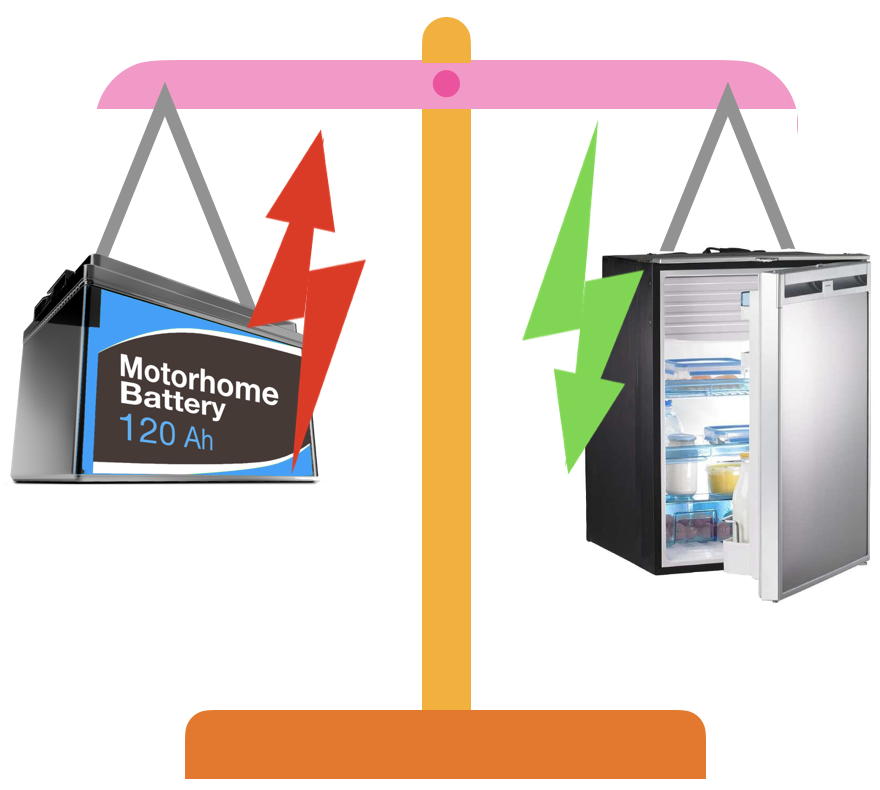 We know how much electrical energy we can store in our battery/s, but how much of this stored energy does each of our appliances use each day?
We know how much electrical energy we can store in our battery/s, but how much of this stored energy does each of our appliances use each day?
To calculate how long our batteries can power the appliances in our van before their charge is exhausted we need to know how much electrical energy each of our appliances consume per hour or per day.
The electrical current required to run an appliance is measured in Amperes, usually abbreviated to Amps (A). Amps are measured using an Ammeter.
If you have an Ammeter facility in your battery monitor – displaying the Amps flowing into and out of the battery/s – you can gain a reasonably accurate measure of the electrical current drawn by each appliance. Without access to an Ammeter, the next best option is to delve into the specification pages of the user manual for each appliance.
12V appliances consume stored energy from your battery/s. Battery capacity is measured in Amp Hours (Ah). An appliance that is drawing 2 Amps of current will be depleting your battery capacity by 2 Ah each hour that it is running.
Refrigerator
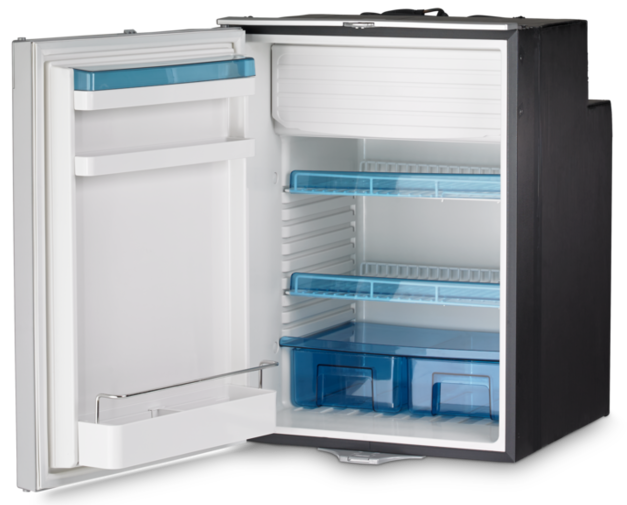 When considering the ‘standard’ 12V appliances installed in a Campervan or Motorhome, the refrigerator is the major consumer of electrical energy stored in your battery/s.
When considering the ‘standard’ 12V appliances installed in a Campervan or Motorhome, the refrigerator is the major consumer of electrical energy stored in your battery/s.
According to the Dometic user manual, our 110 litre 12V / 230V compressor fridge/freezer is rated at 6.2 amps. This is probably a maximum ‘startup’ figure – our battery monitor indicates that the fridge draws around 3 amps when the compressor is running. (It is important to know the maximum startup current so that the correct gauge cabling is used to carry that level of current when required.)
There are many variables to consider when assessing overall fridge power consumption – ambient temperature, contents (more efficient when fully loaded and cold), how often the door is opened, etc.
If our fridge is drawing 3 amps when the compressor is running, which isn’t all the time, I would estimate that it is consuming around 2.5 Ah of battery capacity over an hour. This will vary depending on ambient temperature, fridge temperature settings and usage.
So, let’s say that the average stored energy consumption of our upright compressor fridge is around 60 Ah per day. (2.5Ah x 24h)
|
A 100/130 Litre absorption fridge is likely to consume around 10-15 amps, depleting battery storage by 10-15 Ah per hour, but larger absorption fridges may draw even more current – up to 25 amps. Our experience with smaller 2-way chest-style compressor fridge/freezers is that they consume much less energy than our 110L upright fridge – they draw about 1 amp in normal conditions. A 100Ah AGM battery with a ‘usable’ 50Ah capacity will power one of these fridges for a couple of days. Even longer with a similar size Lithium battery. |
Lighting
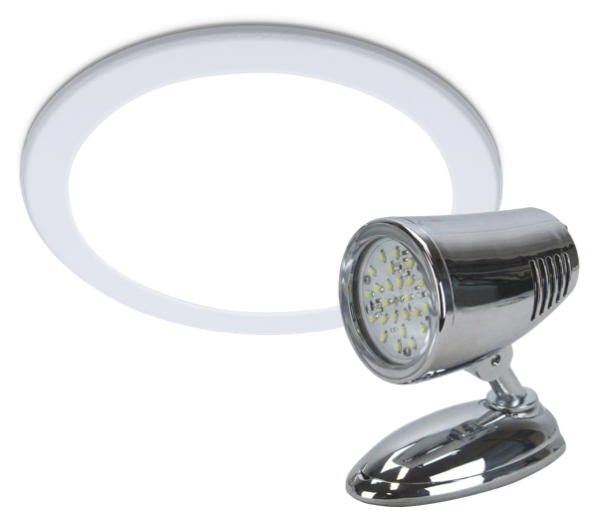 Modern LED lights consume very little of your battery/s’ stored energy. According to the specs in the product manuals, the power consumption for our lights is as below….
Modern LED lights consume very little of your battery/s’ stored energy. According to the specs in the product manuals, the power consumption for our lights is as below….
-
-
- multi-LED kitchen galley lights: 0.1 amp
- multi-LED reading lights over our bed: 0.2 amp
- larger multi-LED ceiling lights: 0.4 amp
-
So, making a rough estimate, if you run your ceiling lights and kitchen galley lights for 1 hour and the reading lights for 2 hours each day, lighting will deplete our stored battery energy by around 2 Ah per day.
TV / DVD
 Our TV/DVD draws about 1.8 Amps when running. Possibly a little more when watching a DVD, as it has a small motor rotating the disk.
Our TV/DVD draws about 1.8 Amps when running. Possibly a little more when watching a DVD, as it has a small motor rotating the disk.
Let’s say that at 2.0 Amps, for 3 hours per day, the TV/DVD unit depletes our storage capacity by around 6 Ah per day. (Alternatively, reading a book consumes 0Ah per day!)
Water pump
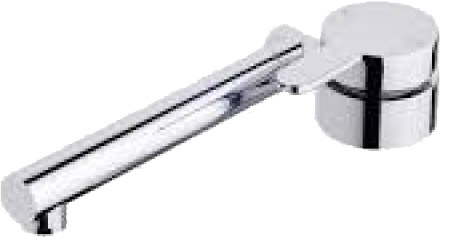 The water pump draws a maximum 5.2 amps when running – which is likely to be no more than 15 mins each day. (The water pump is also drawing a very small amount of power even when not running – electricity used to keep the pump valve closed.)
The water pump draws a maximum 5.2 amps when running – which is likely to be no more than 15 mins each day. (The water pump is also drawing a very small amount of power even when not running – electricity used to keep the pump valve closed.)
Which runs out at about 1.5 Ah per day.
Fan
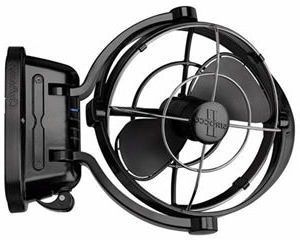 We often run our Sirocco fan at night, especially in warm weather, or when it is raining and we are unable to leave the windows or roof hatch open. The fan has three speed settings – low, medium and high – and draws 0.12 / 0.22 / 0.35 amp, depending on the speed setting. The fan also has a timer setting for 3/6/9 or 12 hours.
We often run our Sirocco fan at night, especially in warm weather, or when it is raining and we are unable to leave the windows or roof hatch open. The fan has three speed settings – low, medium and high – and draws 0.12 / 0.22 / 0.35 amp, depending on the speed setting. The fan also has a timer setting for 3/6/9 or 12 hours.
Running on low / medium speed settings, the fan will consume around 0.5 Ah of stored battery energy over three hours.
iDevices
 USB charging of personal electronic devices will also deplete the house batteries’ energy storage. An iPhone battery requires around 2.6 Ah to fully charge, while an iPad consumes around 11.6 Ah to fully charge.
USB charging of personal electronic devices will also deplete the house batteries’ energy storage. An iPhone battery requires around 2.6 Ah to fully charge, while an iPad consumes around 11.6 Ah to fully charge.
Suggestion: Use a USB ‘Power Bank’ battery, pre-charged from mains power or from the alternator while driving, to maintain these devices, rather than the house batteries if battery capacity is at a premium.
Total stored electrical energy consumption (Ah per 24 hrs)
-
-
 Fridge: 60 Ah
Fridge: 60 Ah- Lights: 2 Ah
- TV/DVD: 6 Ah
- Water pump: 1.5 Ah
- Fan: 0.5 Ah
-
Which makes a grand total of around 70 Ah per day (not including USB iDevice charging, diesel heater, etc).
If our total usable battery capacity is 192 Ah (2 x 120Ah Lithium batteries) and our consumption is 70Ah per day then, without any battery recharge we have around 65 hours (2.7 days) of total battery run time. (192 / 70 x 24)
If we consider AGM batteries with a similar capacity (240 Ah), with 50% usable capacity (120 Ah), and no battery charging, we would have around 40 hours (1.6 days) of run time. (120 / 70 x 24)
Fortunately it is unlikely that we will ever have zero recharging of the batteries, so the 65 hour (Lithium) and 40 hour (AGM) run time estimates are a theoretical minimum.
Read more about appliance energy consumption at the 12V Blog.
Heaters and other stuff
 While our ducted air heater is powered primarily by diesel fuel, a small amount of 12V power is used to heat the glow plug to start combustion and to keep the heater fan running. (Ditto for LPG heaters. See table below.)
While our ducted air heater is powered primarily by diesel fuel, a small amount of 12V power is used to heat the glow plug to start combustion and to keep the heater fan running. (Ditto for LPG heaters. See table below.)
LPG hot water heaters also use a small amount of 12V power to ignite the gas, and the Truma manual advises that 0.05 amp of current is drawn when in ‘standby’ mode.
Our Sirocco II fan uses very little stored energy – 0.12 amp on low speed and 0.36 amp on high speed.
230V appliances connected to our inverter can draw a large amount of current, but generally only for short lengths of time, so the overall drain on the stored energy capacity of the battery is not too great. So long as your battery/s are able to supply the continuous current required by these appliance (sandwich press, microwave oven, etc).
Keep in mind that many appliances consume small amounts of electrical current when in ‘standby’ mode, when not actually being used – water pump, hot water heater, TV, inverter, etc. Even our DC-DC battery charger and our battery monitor consume a small amount of electricity 24 hours a day. Our inverter, for example, consumes 0.5 Ah per hour if it is turned on, but not actually powering any appliances.
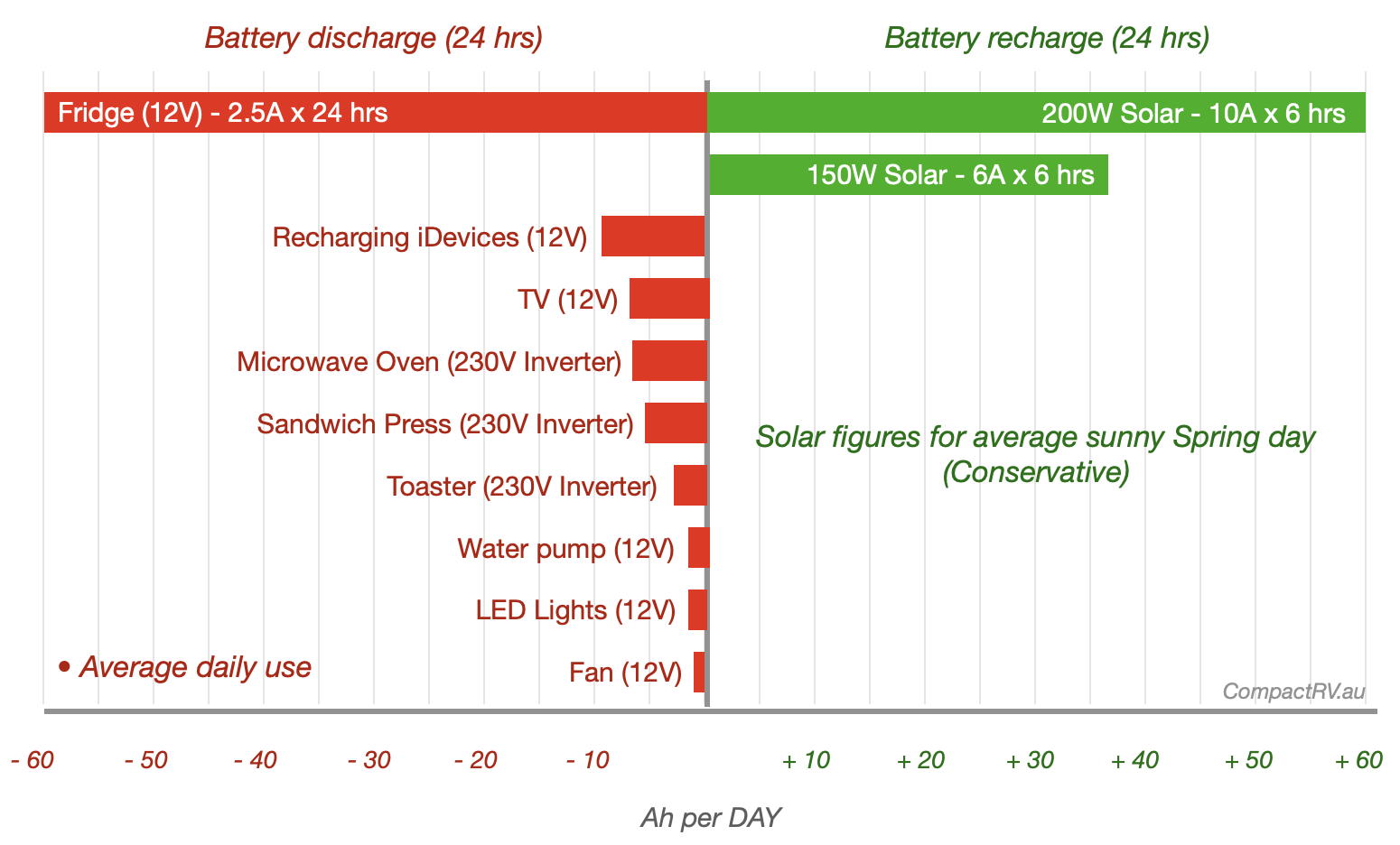
Appliance Consumption Table
The table below lists appliances in our van, and their power and/or fuel consumption. In most instances, this information is based on manufacturer specifications provided in the manual that was supplied with the appliance.
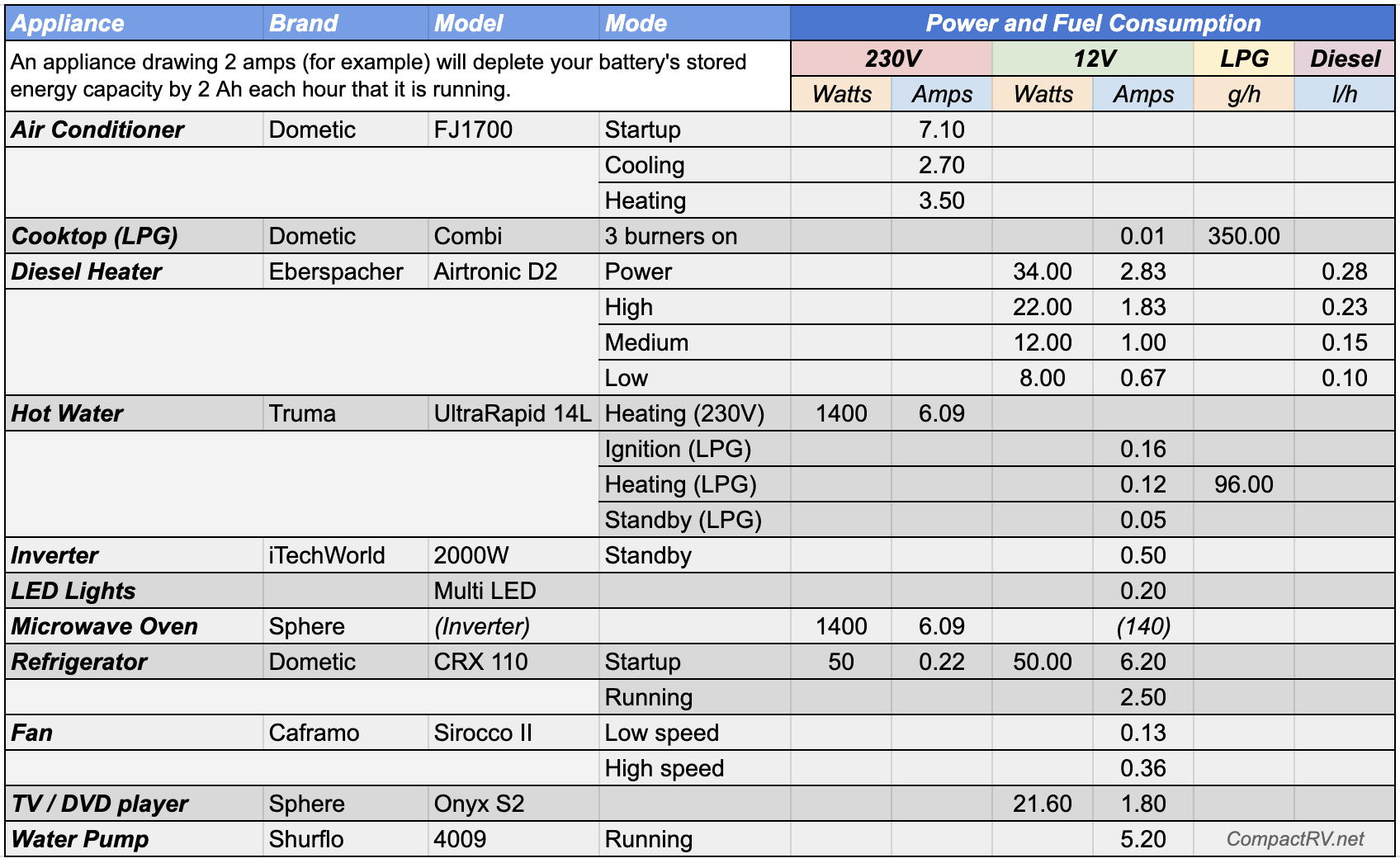

230V appliances and inverters
 I have added some common portable 230V AC appliances to the above list, for consideration of total power consumption when connected to an onsite (15A) power supply. (Or maybe when parked in a domestic / residential environment with a 10A connection.)
I have added some common portable 230V AC appliances to the above list, for consideration of total power consumption when connected to an onsite (15A) power supply. (Or maybe when parked in a domestic / residential environment with a 10A connection.)
Included in the list of portable appliances, and the current drawn when using these appliances on a 230V AC connection, is the current drawn when using an inverter to power the appliances from 12V DC batteries. Notice that the current drawn when using a 12V supply is considerably greater than when connected to 230V, due to the lower voltage (Power = Volts x Amps…… if the voltage drops the amps have to increase to maintain the power.)
Regardless of the quality and capacity of the inverter you choose, you will need a solid Lithium battery bank to support the large amount of current that many 230V appliances will draw – particularly heating appliances like kettles. You will also need a (short) heavy duty wiring connection and an appropriate circuit breaker between your inverter and battery: 100A – 300A, depending on the size of your inverter.
We recently installed an inverter, after upgrading to LiFePO4 (Lithium) batteries.
-
-
- More info: Installing and using our inverter | Lithium Battery Upgrade
-
Getting it all in perspective
To put this all in a visual format – our 12V appliances’ rate of energy consumption pales into insignificance when compared to the rate of current consumed by 230V appliances running through an inverter. Fortunately these 230V appliances only run for a few minutes (not the full hour as depicted in the graph below).

Or, more appropriately, consider these consumption rates in terms of average daily use, with reference to battery capacity (in our case, 2 x 120Ah Lithium batteries) …..

The next section – Battery Recharging – discusses how much energy is recharged to the batteries from our roof-top solar panel, the vehicle alternator and a 230V power connection.
More reading |
Batteries | Consumption| Battery Recharging | Solar Charging | How Long Without Sun? | Alternate Charging Options | The Bottom Line
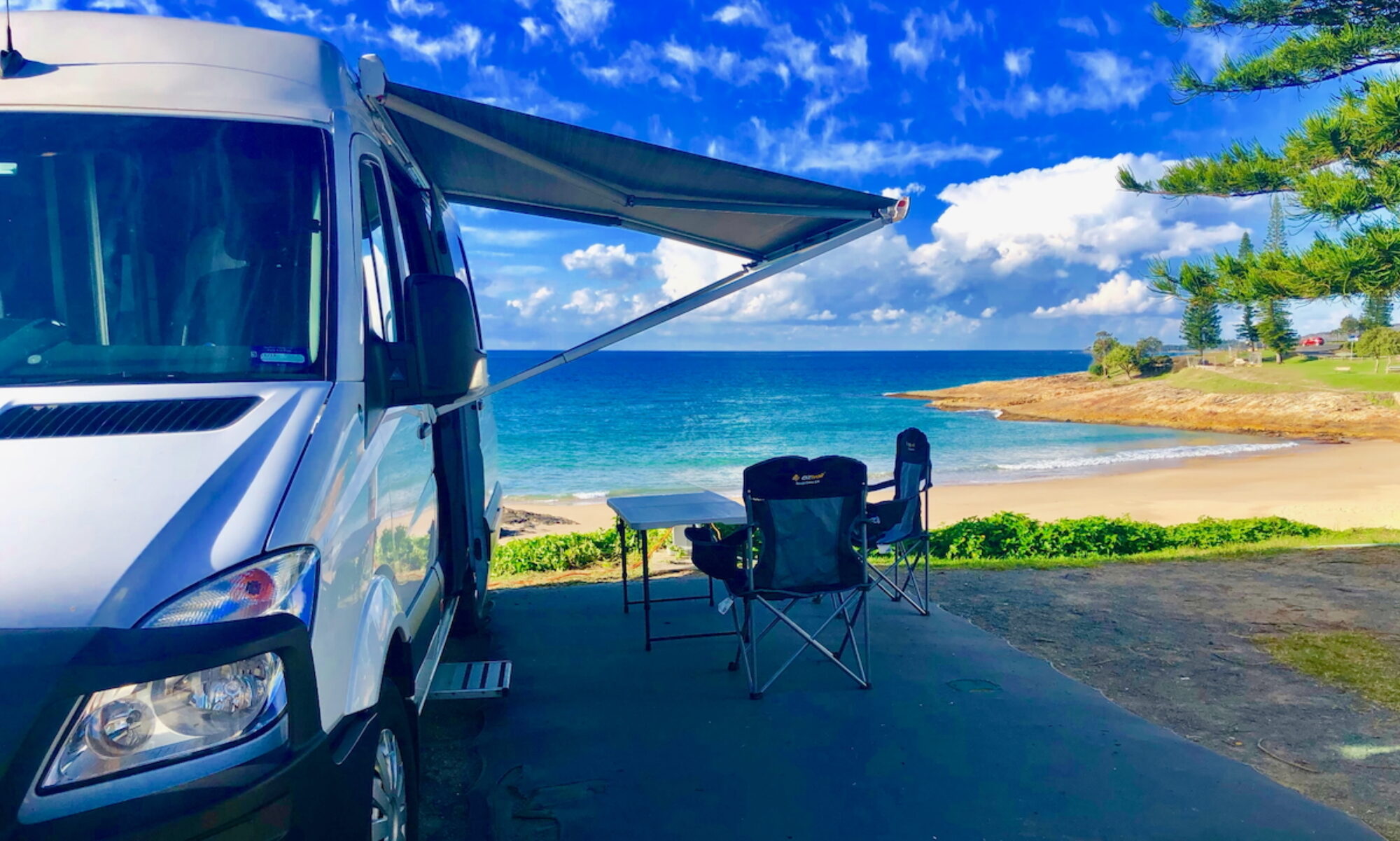
 Note: ‘3-way’ absorption fridges (12V / 230V / LPG) consume considerably more electricity when running in 12V mode than a 2-way compressor fridge.
Note: ‘3-way’ absorption fridges (12V / 230V / LPG) consume considerably more electricity when running in 12V mode than a 2-way compressor fridge.